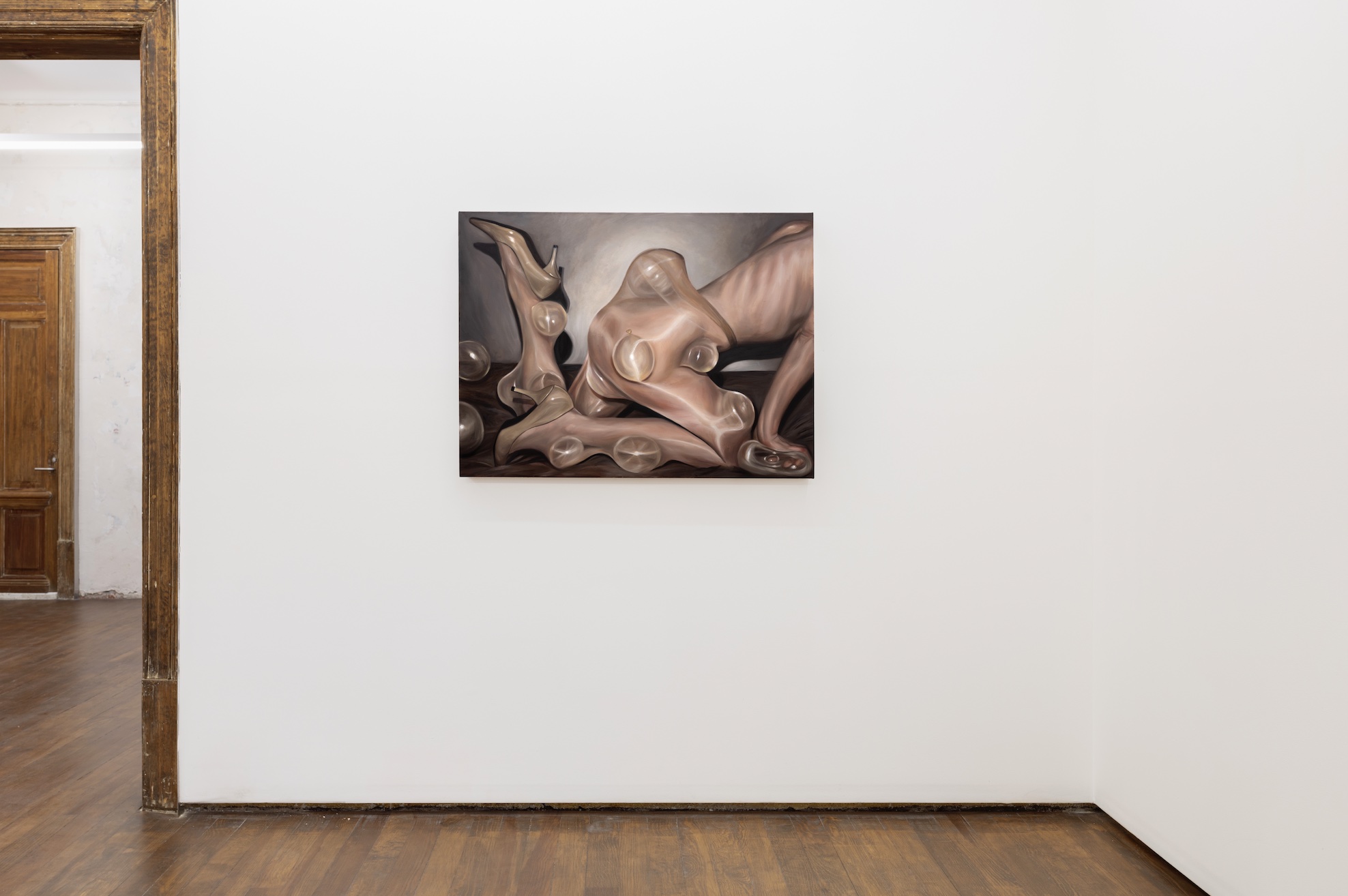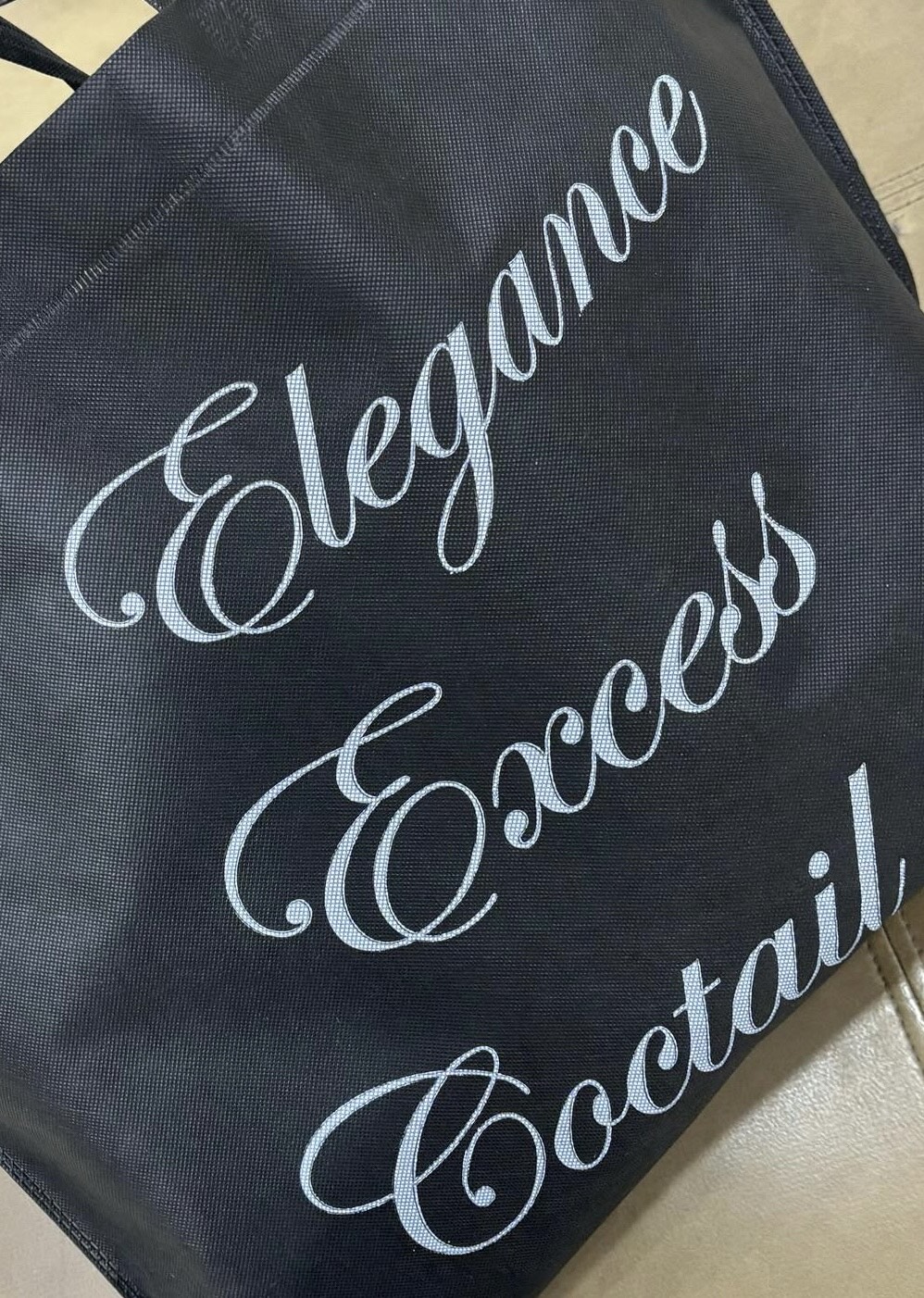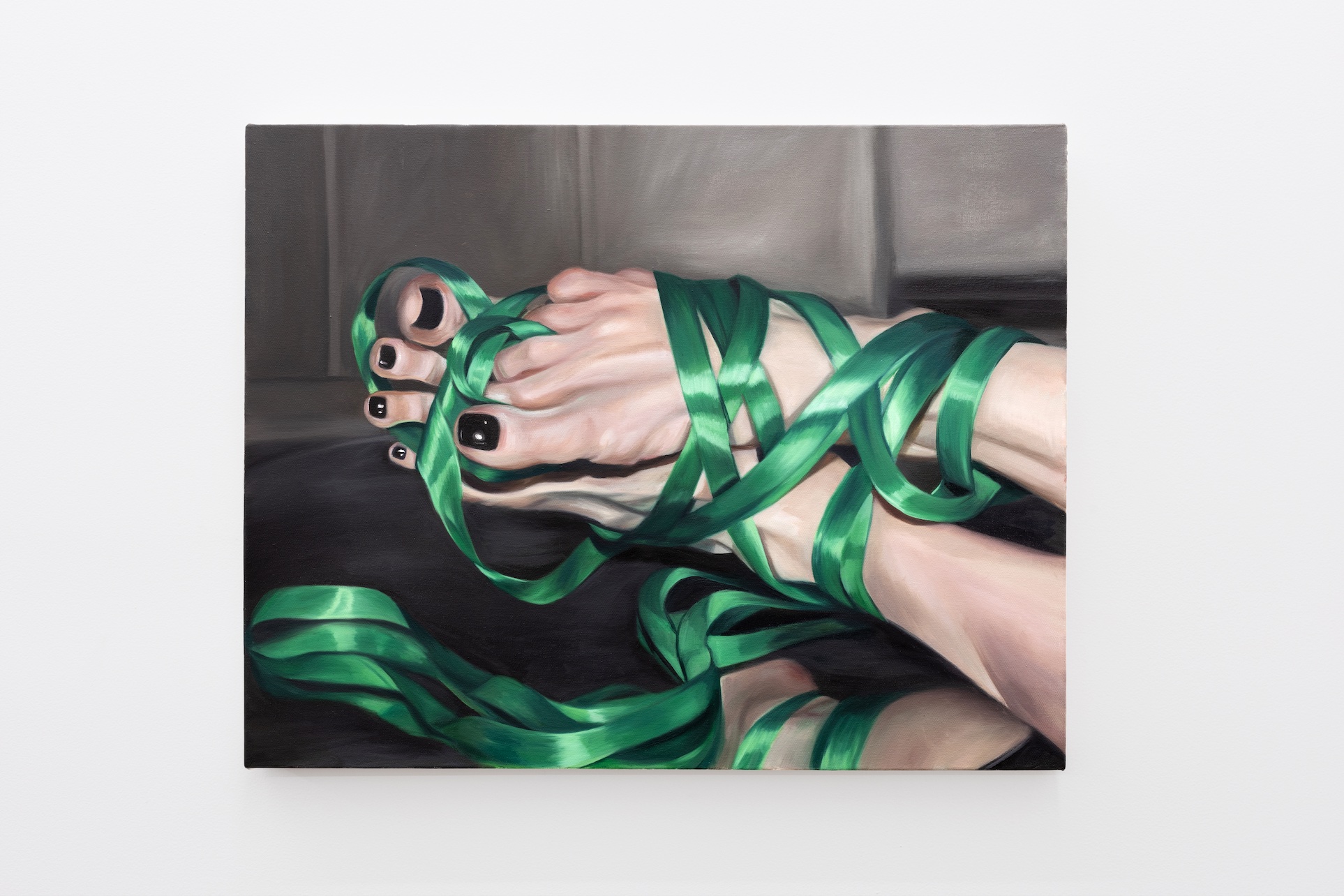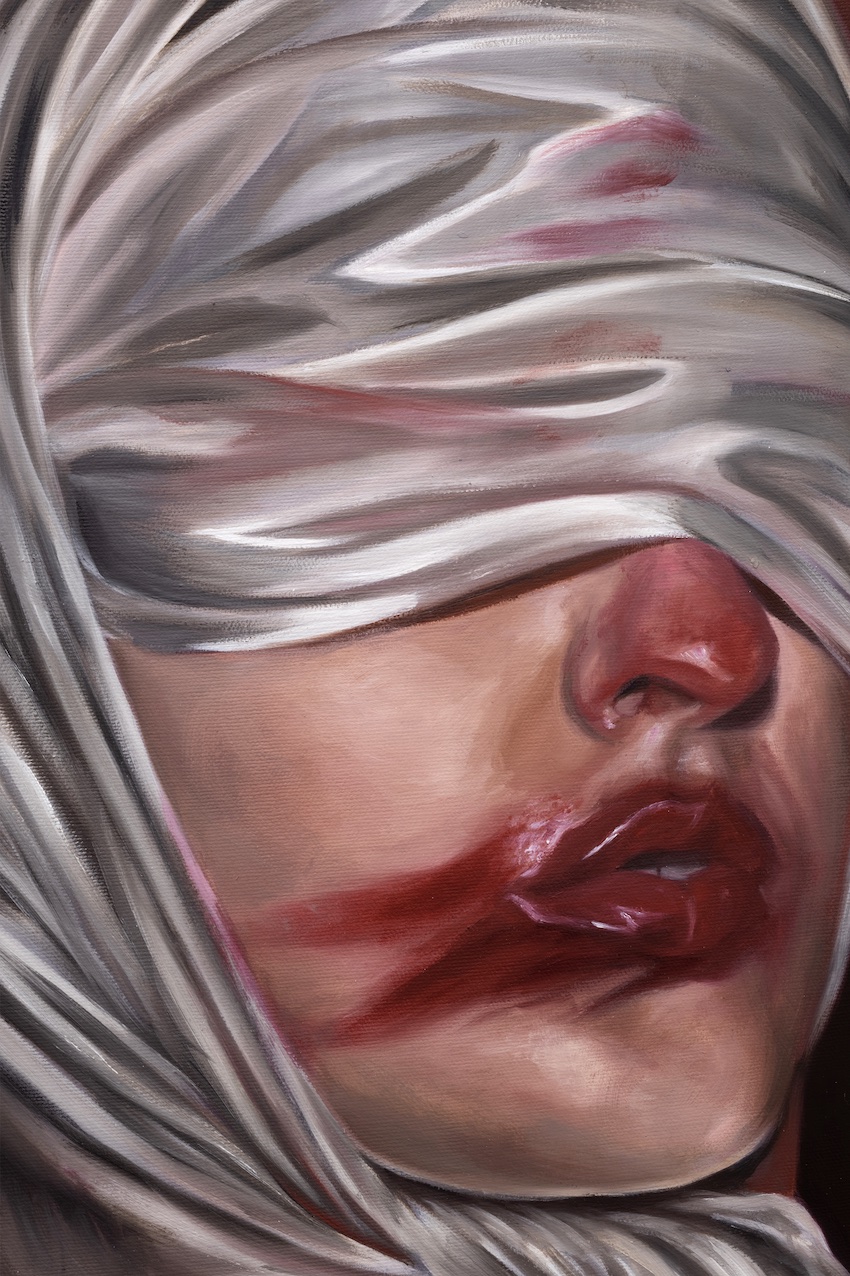
Review
The Last Laugh. Brittany Shepherd at Deli Gallery
by Verana Codina
Reading time
4 min
Elegance, essence, coctail, three words that could very well sum up the ethos of this exhibition decorate the front of a handbag that Brittany Shepherd found during her visit to Mexico, on the occasion of her recent exhibition The Last Laugh at Deli Gallery.

In it, sumptuous paintings are overflowing, desiring; they long to be seen. The exhibit is starred by the sensuality of fabrics and ribbons, their textures and folds: shiny satin, suffocating plastics and tight lycra stockings in body positions that compromise even the voyeurist.
I tell the artist that I find her painting uninhibitedly capitalist: hypercapitalist. Then she tells me that in the past she resorted to offering photographs of her feet online. The familiarity projected by these feet is uncanny, and not just because they are hers, but because the meticulousness with which she portrays them, studying her best angles to get the prize photo is now obvious. Painting their feet came somewhat naturally. The images on these canvases also come from photographic archives she has downloaded from the internet, and, when she requires a physical body, of herself or her friends.

Desire and consumption become ambassadors of the show, as they are also ambassadors of fetishistic practices. In the paintings, sex is evident, it sells, yet there is also a degree of privacy, a secret that is hidden behind the scenes. The Last Laugh refers to that somewhat awkward moment of behind-the-scenes preparation where the artist produces a mise-en-scène and poses it. There are actions that can even seem clownish, embarrassing; like tangling her legs with ribbons and walking down a steep flight of stairs, or blowing up balloons and then carefully inserting them into a lycra catsuit, hoping they don't burst in the process. The subordination with which some of the characters appear in the paintings, cornered and set apart from the center of the rooms, makes me think about the hidden life of the fetishist, about their community as niche, about the power relations that are generated between the one who dominates and the one who is subordinated, even in the irregularity of the economy generated from their consumption.
This game between the hidden and the visible refers me to Lacan's definition of desire as the manifestation of the subject's lack, which appears when the subject is not able to fully express in words what they need and cannot demand it from the other. In this sense, if language is never able to express what we want to say in full, there is a part of our request that is left behind: what is wanted is something that remains partially hidden from consciousness.

If it becomes difficult to ask for what you can't name in this reality, you give it a try from another one: behind the screen. The online market for a fetish as common as podophilia is becoming an increasingly popular way to make money. Asking to have a desire fulfilled through a screen, anonymously, allows you to demand or articulate the desire for such abstract things as love–or the lack of it–. This same anonymity that appears when the artist keeps the hidden identity of her portrayed subjects–fragmenting the bodies–because she is not interested in focusing on the person, but on a concept. Torsos and busts wrapped in fabrics or covered with makeup, empty heels that reaffirm the artist's double narrative where pieces of her surroundings barely peek through, without revealing too much. In an almost burlesque gesture, Brittany confirms that in her work there is something performative and shameful combined with the sensuality of the act, two phenomena that in her case are inseparable in the experience of the creative act.
Translated to English by Luis Sokol
Published on May 4 2024